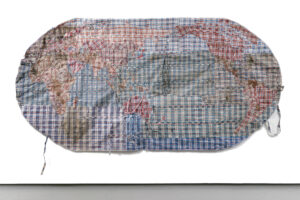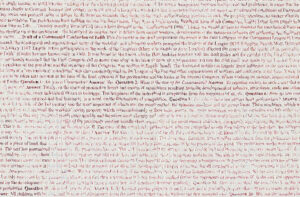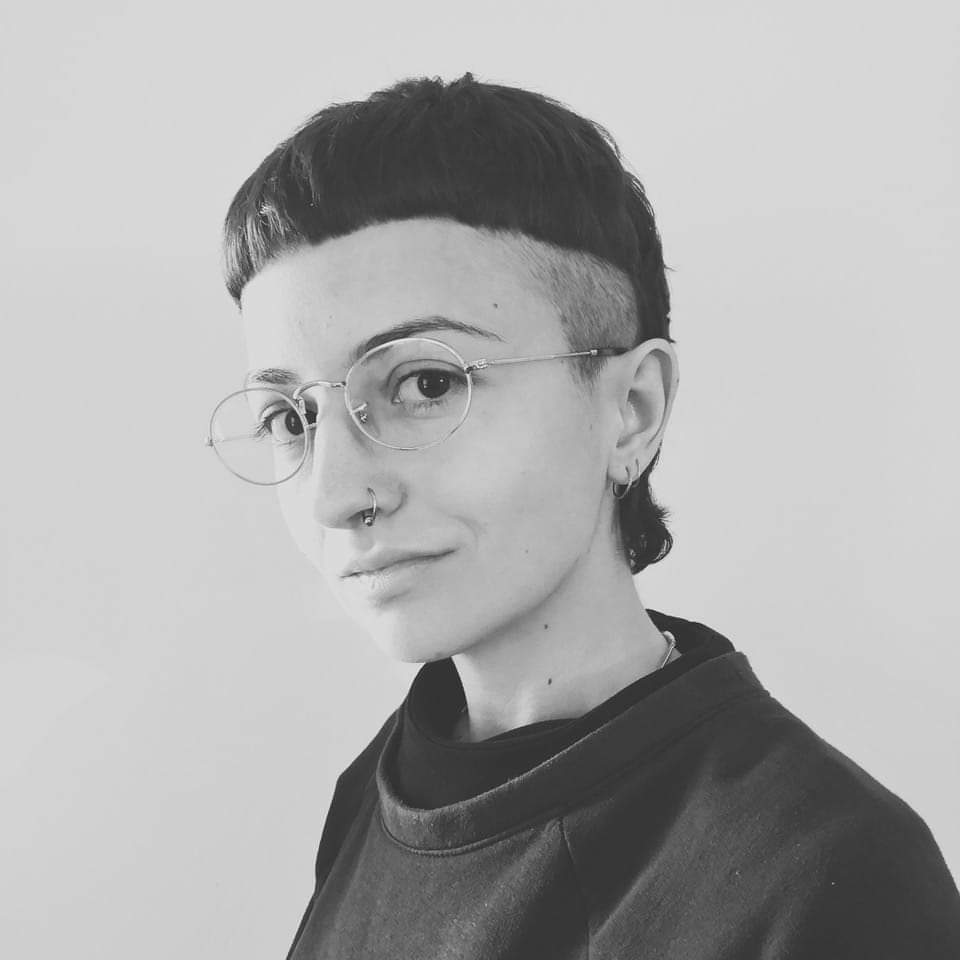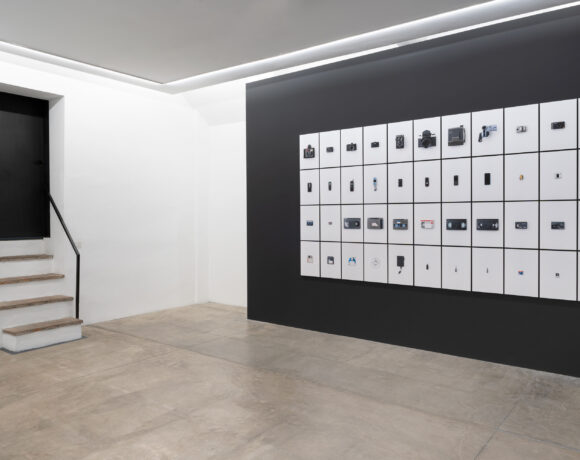Dan Halter was born in Zimbabwe in 1977 and currently lives in South Africa. In 2001 he graduated from the University of Cape Town. His artistic research explores geographical boundaries, migrational phenomenons, and other political and social issues through a keen use of craft methods, such as weaving, and the inclusion in his work of everyday materials, such as woven plastic bags from China. When he talks about his practices he says: “My artistic practice is informed by my position as a Zimbabwean currently living in South Africa. My work deals with my sense of dislocated national identity, human migration and the dark humour of present realities in Southern Africa. This is largely a backlash due to a history of oppression that continues to manifest today”.
I met Andrea Sirio Ortolani, Osart Gallery’s founder, and Dan Halter, in order to understand their relationship and to know more about the show that will inaugurate in June at the gallery.
Lucrezia Costa: How did the interest of the gallery for southern African art born?
Andrea Sirio Ortolani: I made my first trip to South Africa in 2008, when I started to be fascinated by the African art system, making studio visit with artists those became famous during that period. My interest was also in Afroamerican art, and in general I was interested in artists those have that origin. Then I realized some shows in the newborn gallery about Africa in 2008. In 2009 I organized an exhibition with Titus Kaphar, an Afromamerican artist and I exhibited for the first time in Itali works by Lynette Yiadom-Boakye. I always followed what happened in Africa and two or three years ago I wanted to relate after some time to that world, in order to understand how it developed in these ten years. When I came back, the world was completely changed, there was a cultural system that was grown up esponentially with internationally known galleries, such as Smac Gallery, Whatiftheworld, Stevenson, Goodman and blank projects. But the most important thing was that a new museum system had been developed, for example with Zeit MOCAA, and private foundation, such as Normal Foundation, those permitted a fast grow and a hug development for artists and for the cultural context. My interest in Dan Halter was first of all a personal thing. I saw his works in museums and foundations and I contacted him because I was really fascinated. Then a collaboration born, a cultural exchange between us, that brought me to appreciate his works and his personalities always more and more.
Dan, in your practice you use a lot of everyday materials. Which kind of cultural value do they represents to you and what’s your relationship with them?
Dan Halter: When I studied art at the University of Cape Town one of the things that I learned was to think about the meaning behind each material that I chose to work with. This led me to abandon painting in favour of working with materials that resonate for me. Materials loaded with meaning that I use as vehicles to translate ideas. One such material is the cheap Chinese-made plastic-weave bags that have become almost synonymous with migrant luggage around the world. These bags are often labeled by the derogatory names used to describe the immigrant demographic of a particular region. For example they are called Ghana Must Go bags in Nigeria after Ghanaians were forcibly expelled from there in the early 1980s and used these bags to flee with their possessions. They are called Bangladeshi bags in London, Polen Tasche or Tuerken Koffer in Germany and Shangaan or Zimbabwe bags in South Africa. The woven nature of these bags also lends itself to the weaving that makes up a large part of my artistic practice. I have deconstructed the pattern found on these bags and then reproduced it out of woven paper. Using everyday materials in art has a history in movements such as arte povera; which has been an inspiration for me. I have been influenced by artists such as Alighiero Boetti, whose Mappa del Mondo works inspired my own Rifugiato Mappa del Mondo series.
You mix the materials we talked about with language and words, those are showed as classical texts sometimes or coded other times. Which is the significance you attribute to language and which is the relationship with the physical part of your job?
“The word had not been recognized as a virus because it has reached a state of stable symbiosis with the host” (William S Burroughs).The ability of language to communicate ideas is vital to us as humans. By weaving text to create textiles, I use the written word for its material nature as well as its content. This plays on the words text, textile and texture. Working with my assistant Bienco Ikete we have developed a process of weaving paper. We have woven classic books such as Animal Farm and Heart of Darkness, ideological texts such as The Communist Manifesto and The Social Contract. In this exhibition each of these books has been laid out and woven to form a different bank note.
Which is the relationship you have with West countries and with your homeland?
I am fortunate to have a Swiss passport even though I was born and grew up in Zimbabwe. Zimbabwe and Switzerland are two of the most different countries in the world. After high school in Zimbabwe I spent a couple of years in Switzerland and I went to art school there for a year. I was very homesick at that time. After that I moved to South Africa to study art as it was not possible to study art at a tertiary level in Zimbabwe. My parents were later attacked in Zimbabwe and now they also live in South Africa. My sense of belonging has been dislocated, I feel at home in South Africa now, part of the extensive Zimbabwean diaspora. My assistant Ikete is a refugee here in South Africa from the Democratic Republic of Congo.
Lucrezia Costa
Info:
Dan Halter. Money Loves Money
25.05 – 31.07.2021
Osart Gallery
corso Plebisciti 12, Milano
mail: info@osartgallery.com
www.osartgallery.com
Tue – Sat 10.00-13.00/14.30-19.00
 Ritratto dell’artista Dan Halter in una foto di Matthew Sandager, courtesy Osart Gallery, Milano
Ritratto dell’artista Dan Halter in una foto di Matthew Sandager, courtesy Osart Gallery, Milano
 Dan Halter, Bamba Zonke, 2016, borsa di plastica intrecciata ritrovata e modificata, 65 x 70 cm, courtesy l’artista e Osart Gallery, Milano
Dan Halter, Bamba Zonke, 2016, borsa di plastica intrecciata ritrovata e modificata, 65 x 70 cm, courtesy l’artista e Osart Gallery, Milano
 Dan Halter, Rifugiato Mappa del Mondo (China-centric), 2019 borsa di plastica intrecciata ritrovata e modificata, courtesy l’artista e Osart Gallery, Milano
Dan Halter, Rifugiato Mappa del Mondo (China-centric), 2019 borsa di plastica intrecciata ritrovata e modificata, courtesy l’artista e Osart Gallery, Milano
 Dan Halter, The Communist Manifesto (How the west was lost), 2020, stampe a inchiostro d’archivio intrecciate a mano, 150 x 77 cm (dettaglio), courtesy l’artista e Osart Gallery, Milano
Dan Halter, The Communist Manifesto (How the west was lost), 2020, stampe a inchiostro d’archivio intrecciate a mano, 150 x 77 cm (dettaglio), courtesy l’artista e Osart Gallery, Milano

Graduated in photography and specializing in visual arts and curatorial studies, she works with art at three hundred and sixty degrees, creating works characterized by a strong material component.






NO COMMENT